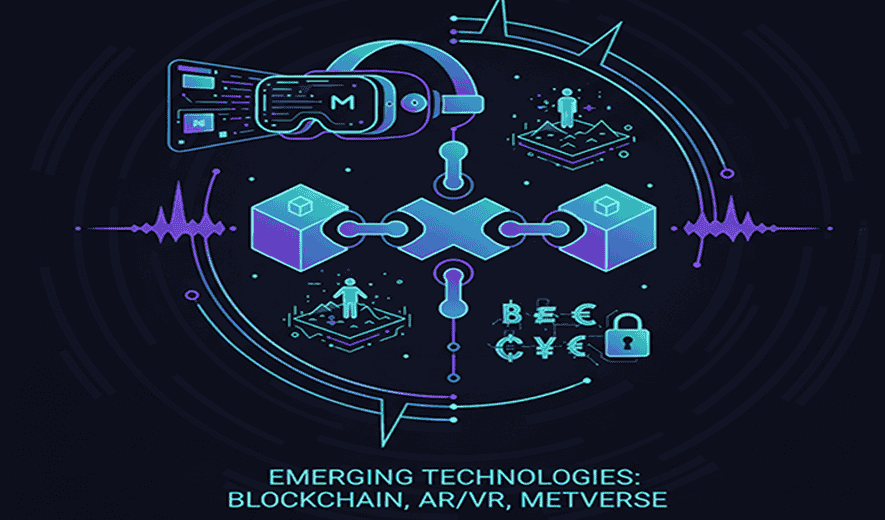
Emerging Technologies: Blockchain, AR/VR, Metaverse
Blockchain, augmented reality (AR), and virtual reality (VR) are core technologies shaping the development of the metaverse, a collective of interconnected, immersive 3D virtual worlds. While they are distinct, these technologies converge to create new digital experiences and economic opportunities.
Blockchain
Blockchain is a decentralized digital ledger that records and secures transactions across a network of computers. Its core characteristics make it a foundational element for a user-owned metaverse.
- Decentralization: Unlike traditional databases controlled by a single entity, blockchain's distributed nature allows for shared record-keeping and eliminates the need for a central authority.
- Security: Cryptography links blocks of transaction data, creating a tamper-proof record.
- Digital ownership: Non-fungible tokens (NFTs) on the blockchain enable users to truly own digital assets like virtual real estate, clothing, and art.
- Value exchange: Cryptocurrencies allow for secure, peer-to-peer transactions within virtual economies.
Use cases:
- Digital commerce: Securely buying and selling digital goods and virtual land.
- Decentralized finance (DeFi): Enabling financial services and transactions without traditional intermediaries.
- Supply chain management: Providing a transparent record to track the movement and authenticity of goods.
- Secure identity: Creating verifiable digital identities that can be used across different platforms.
Challenges:
- Scalability and speed: Many blockchain networks still struggle to process transactions quickly enough for real-time metaverse interactions.
- High costs: Transaction fees on some networks can be prohibitive, especially during periods of high traffic.
- Energy consumption: The "proof-of-work" consensus mechanism used by some blockchains is very energy-intensive.
- Regulation: The lack of clear, global regulatory frameworks creates legal uncertainty for businesses and users.
Augmented Reality (AR)
AR overlays digital elements like images, video, and 3D models onto the physical world, typically through a smartphone, tablet, or smart glasses.
- Enhances reality: Unlike VR, AR does not replace your view of the real world but adds to it.
- Device versatility: AR is accessible via commonly available devices like smartphones and is becoming more integrated into wearables like smart glasses.
Applications:
- Retail: Virtual "try-on" experiences for clothing and makeup, or visualizing furniture in your home before buying.
- Manufacturing: Providing on-the-go instructions, checklists, and remote assistance to workers.
- Healthcare: Allowing surgeons to view patient data and scans overlaid onto the body during procedures.
- Entertainment: Location-based games like Pokémon GO.
Challenges:
- Hardware limitations: The current capabilities of devices regarding processing power and battery life can limit the complexity of AR experiences.
- User experience: Crafting seamless and intuitive AR experiences can be difficult, and some users may find the technology clunky.
- Privacy and security: AR systems collect data about the user's environment, leading to potential privacy concerns.
- Development costs: Creating high-quality AR content and ensuring cross-platform integration requires significant investment.
